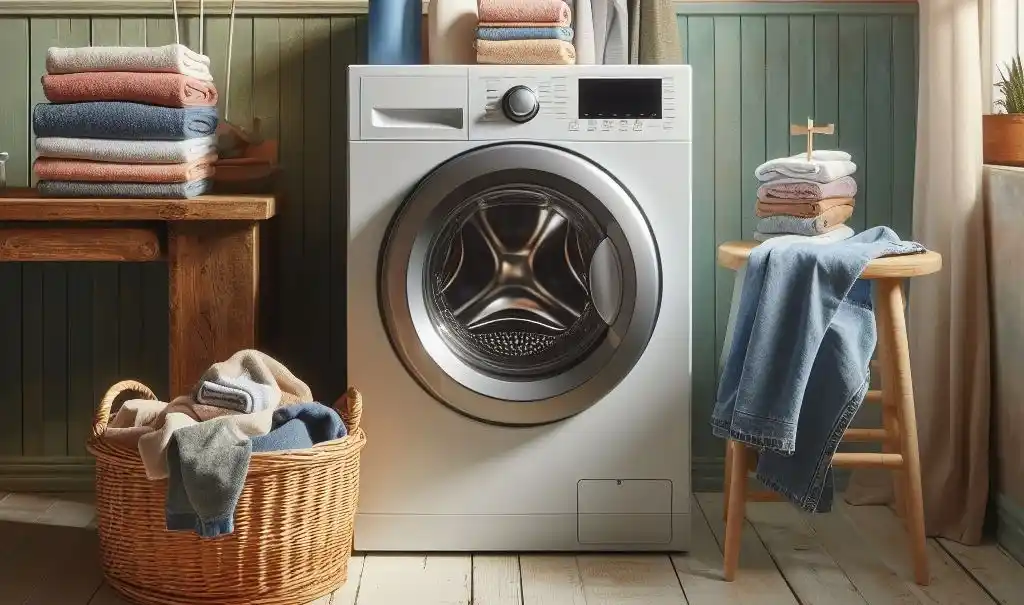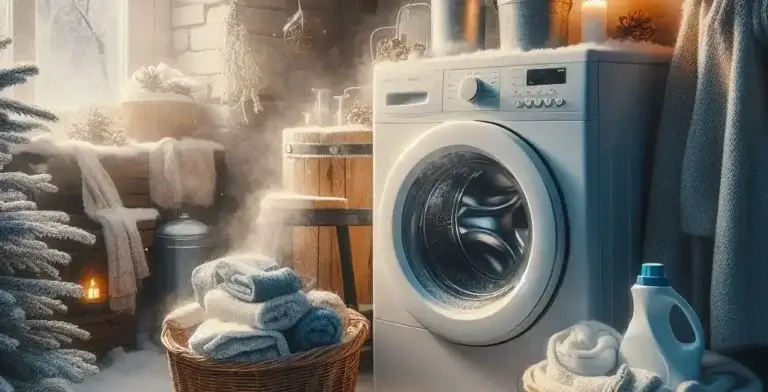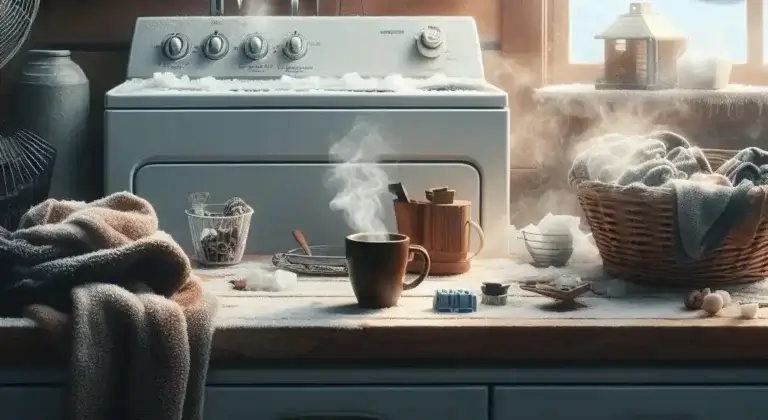Can I Wash Towels with Sheets Together? The Complete Guide to Wash Sheets and Towels Together
Are you staring at a pile of dirty towels and sheets and wondering if you can just throw them all in the washing machine together? The question of whether can i wash towels with sheets is common among many homemakers.
Washing linens, including your sheets and hand towels, can be time-consuming. Who has the time to sort out kitchen towels, wash clothes, lights and darks, delicates, and sturdies? It’s tempting to throw all your towels and sheets together in the same load to save time and effort. But is it a good idea to wash towels and sheets together?
In this comprehensive guide, we’ll cover whether or not you should wash sheets and towels together, the pros and cons, and best practices for keeping your linens fresh and free of damage.
Table of Contents
Why You May Be Tempted to Wash Towels and Sheets Together
There are a few reasons why washing towels and bed sheets in the same load may seem appealing:
- Washing kitchen towels and bed sheets together is more convenient. It saves time by eliminating the need to sort laundry and do multiple loads when you wash your sheets and towels together.
- Washing your sheets and towels together saves water and energy. Combining towels and sheets into one wash cuts down on the resources used.
- Towels and sheets often get dirty at the same rate. So it makes sense to wash your sheets and towels on the same schedule.
We get it – the idea of streamlining laundry is really nice. But should the convenience of washing your towels and sheets together override the proper care of your linens?
First, let’s take a deeper look at whether it’s OK to wash them together.
Is It OK to Wash Towels and Sheets Together?
The short answer to whether you should wash your sheets and towels together is: it depends.
Certain factors determine if it’s right or not advisable to wash towels and sheets together:
- Fiber content
- Color
- Load size
- Wash temperature
- Drying time
We’ll explore how each of these factors impacts washing sheets and towels together.
Fiber Content Differences
- Towels are most often made of cotton or cotton blends. Cotton is very durable.
- Bed sheets span a wider range of materials like cotton, cotton blends, polyester, silk, flannel, linen or lyocell.
Sheets, especially higher thread count ones, tend to be more delicate and prone to damage than towels.
The fiber content makes a difference in how items should be washed. Cotton towels can typically handle vigorous washing, while silk sheets require much gentler care.
Washing towels and sheets together means you can’t customize the washing method based on the laundering needs of each fiber type.
Color Differences
Do your towels and sheets match in color? Often not.
Dark-colored towels may bleed dye onto light-colored sheets if washed together on a hot wash cycle. This can ruin sheet sets beyond repair.
Also, over time, the lint and fuzz from one type of item can cling to the other – dulling colors and making them look dingy faster. Think navy blue towel fuzz all over your white fitted sheet.
To prevent colors from degrading prematurely or bleeding excess dye, it’s smart to launder similar colors together.
Load Size Matters
For effective cleaning, give laundry loads enough room to move freely – overcrowding them causes issues.
Sheets take up substantial space in the drum. Add bulky towels in there too, and you may exceed the washing machine’s capacity. An overloaded washer has trouble agitating and rinsing laundry properly.
But washing very small mixed loads of sheets and towels can cause problems too. Without enough items for balance and absorption, excess moisture may not get extracted well during the spin cycle.
Partially wet laundry translates to longer drying times, wasted energy, and a breeding ground for mildew in machines.
Follow your washing machine manual for filling up loads correctly. Overloading or underfilling damages linens and appliances over time.
Water Temperature Considerations
Hot water (with bleach added in) does an effective job of sanitizing towels that have touched dirty skin. However, many sheets shouldn’t be washed with hot water or bleach – it degrades delicate fabrics.
Cold water is gentler on cloth fibers and helps colors hold better without fading. But cold water doesn’t get towels clean if they’ve accumulated body oils, dirt, and grime. Plus cold water makes it easier for lint and residue to cling between fabrics washed together.
Ideally, wash towels in hot and sheets in cold to lukewarm water as needed based on the fabric content. Mixing them means compromising optimal wash temperatures.
Drying Time Differences
After washing, towels take a much shorter time to dry fully than sheets. It’s because they are made to absorb moisture, so the fibers don’t retain as much water.
Sheets retain a lot more moisture and are slower to dry since they have a lower absorption capacity. High thread count sheets take even longer to dry.
Putting fundamentally different materials together into the dryer can lead to frustration. The towels will finish drying long before the sheets do if you set the cycle based on the sheets needing more time. This wastes energy.
Hot air blowing on already dry towels can damage or discolor them if they sit stewing for too long in an extended dry cycle meant for wet sheets.
As you can see, fiber material, colorfastness, load size, water temperature, and drying times for towels and sheets have enough differences that washing them together causes complications.
Can I Wash Towels with Sheets Together? The Ultimate Solution

In the quest for laundry efficiency, you might wonder if it’s okay to toss towels and sheets together into the washing machine. While it’s technically possible, there are some important considerations to keep in mind before you mix these linens. Here’s a breakdown of the pros, cons, and best practices to help you decide.
Pros of Washing Towels and Sheets Together:
- Water Conservation: Combining loads can save water and energy, which is beneficial for the environment and your utility bills.
- Convenience: It’s quicker to wash two items in one load, freeing up time for other tasks.
- Larger Loads: Towels and sheets can create bulky loads, so washing them together can help fill the machine more efficiently.
Cons of Washing Towels and Sheets Together:
- Lint Transfer: Towels can shed lint, which can stick to sheets and make them look dull or feel rough.
- Color Bleeding: Darker towels might transfer color to lighter sheets, especially in hot water.
- Fabric Damage: Sheets, especially delicate ones, can get damaged by the rougher texture of towels during washing and drying.
- Improper Cleaning: Towels often require hotter water and a longer wash cycle to get truly clean, which might not be ideal for sheets.
Best Practices for Washing Towels and Sheets:
If you decide to wash towels and sheets together, follow these tips:
- Sort by Color and Fabric: Wash light-colored towels with light-colored sheets, and dark towels with dark sheets. Avoid mixing fabrics like delicate silk sheets with heavy cotton towels.
- Use a Gentle Cycle: Choose a gentle or delicate cycle to minimize fabric damage.
- Avoid Hot Water: Use warm or cool water, as hot water can cause color bleeding and fabric shrinkage.
- Separate for Drying: Dry towels and sheets separately to prevent lint transfer and uneven drying.
- Consider Separate Loads: For best results and peace of mind, it’s generally recommended to wash towels and sheets separately.
Additional Tips:
- Check Care Labels: Always check the care labels on your towels and sheets for specific washing instructions.
- Use a Lint Trap: A lint trap can help catch lint from towels before it sticks to sheets.
- Add Vinegar: A cup of white vinegar in the wash cycle can help prevent color bleeding.
- Don’t Overload the Machine: Overcrowding the washer can prevent items from getting clean and cause more lint transfer.
By following these guidelines, you can make an informed decision about whether or not to wash towels and sheets together, ensuring both linens stay clean, fresh, and looking their best.
Pros of Washing Towels and Sheets Together

We’ve covered a lot of drawbacks of mixing towels and linens for laundry. But there are a couple of advantages to consider as well:
1. It saves time
Not separating towels and sheets into piles for individual washing saves the chore of sorting. Skipping a whole step is understandably nice when tackling lots of laundry.
2. Uses less water overall
Combining two smaller laundry loads into one bigger full load cuts back on the gallons used to wash. This conserves water resources.
If you live in an area prone to droughts and water shortages, then using less water is important – and washing mixed towel/sheet loads can help minimize water consumption.
Cons of Washing Towels and Sheets Together
However, there are even more drawbacks that tend to outweigh the limited benefits:
1. Towels and sheets don’t get fully clean
The wash cycle can’t be customized to use hotter water better suited for sanitizing towels along with gentler cold water required for sheets. So neither item type gets properly cleaned.
2. Fibers and fabrics degrade faster
The vigorous agitation, harsh detergents or bleach, and very hot dryer heat that towels can withstand is too rough for the fibers and dyes in nicer sheets over many wash cycles. This causes pilling and fading.
3. Excess lint sticks between materials
Towels lint a lot, while sheets attract lint easily. Washing them together means lint gets trapped in the opposite item type in each load, instead of being contained within similar items. This leaves laundry looking old and dingy faster.
4. Fabric dye may bleed across items
Dark-dyed towels often bleed extra color when new. This excess dye can discolor lighter sheets washed and dried together in the same drum. Say goodbye to your nice white linen sheets after turning them a dull gray by washing them with dark bath towels!
5. Load imbalance if sizes differ
A few large bath sheets and only 1-2 flat/fitted sheets don’t make for a well-balanced cleaning load. Load imbalance leads to poor agitation and inadequate rinsing.
6. Inefficient drying cycles
Mismatched absorbencies between towel and sheet fibers paired with differences in item thickness means towels finish drying faster. This wastes energy by blowing hot air on dry towels after they are already done to finish drying sheets that take longer.
7. Möglichkeit der Schimmelbildung
Partially dried large loads allow excess moisture to stay trapped. This breeds mildew and funky stenches over time.
Let’s explore some best practice tips and alternatives for keeping linens fresh.
Best Practices for Washing Towels and Sheets
After weighing the pros and cons, being cautious about washing towels and sheets together seems wise to preserve their quality and lifespan.
But what are the best methods for keeping them clean? Here is a cheat sheet of good laundry guidelines:
- Sort all items by fabric type and color into either towels, sheets, lights or darks before washing. This allows customizing the cycles.
- Use lower temperatures for sheets – cold to warm water prevents fading. Reserve hot water cycles for bleach-activated brightening of whites only occasionally, not every wash.
- Set towel & sheet cycles separately based on soil level and material needs so each gets fully clean. For example, wash bath towels on hot “Heavy Duty” while sheets take a “Delicates” cold cycle.
- Use liquid detergent for sheets to prevent buildup – powder detergent clings. Powder is fine for towels.
- Check load capacity before washing to avoid an overloaded or imbalanced drum.
- Shake out sheets before loading them to dislodge debris for cleaner results.
- Clean the lint trap before and after drying loads with towels – they lint a lot.
- Use dryer balls to help separate sheets in the dryer and allow better airflow. This prevents bunching and decreases drying time.
- Don’t overload the dryer either. Too many wet items take overly long to dry thoroughly. This wastes energy and risks mildew in pockets of trapped moisture.
Remember – it’s alright to wash towels and sheets together occasionally as needed between deeper cleanings. But make it the exception, not the rule, to enjoy many years of quality use from linens.
Frequently Asked Questions
Still have some questions about whether or not to wash sheets and towels together. These answers to common FAQs should help explain further.
Should you wash bed sheets with towels?
It’s better not to wash sheets and towels together regularly. Towels require higher heat for sanitizing than most sheet materials can handle before degrading or fading. Also, towels shed a lot of lint that sticks to sheets. Exceptions can be made once in a while if needed.
Can I wash towels with sheets?
You can toss both towels and sheets in the wash together if you want the convenience of a single load. However, the tradeoff will be decreased cleaning performance plus the potential for lint transfer, dye bleed, and excessive wear on fibers that shortens the lifespan of linens. We recommend washing them separately.
What problems can happen when washing sheets and towels together?
Potential issues include dye bleeding from dark towels onto light sheets which ruins them, pilling or fuzz forming on sheets faster decreasing quality, trapped moisture between layers leads to bad odors, excess agitation shredding delicate sheet fabric, etc.
Should towels be washed separately from clothes?
Yes, washing towels separately from regular clothing is smart. The fibers and functions differ for items worn close to your body vs. items used for drying your body after bathing. Towels need sanitizing wash methods that are too harsh for most apparel. Also, towel lint clings to clothes.
Can you wash colored sheets with towels?
It’s risky to wash colored sheets with colored towels, especially darker hues, because the dyes may bleed across fabrics. Whites are prone to ending up off-white or light gray. We recommend washing all colored linens separately from each other by type, even if shades seem similar.
We hope these common questions are clearer now!
Conclusion
It’s tempting to want to quicken chore time by washing towels and sheets together. But the tradeoff for that bit of convenience is shortening the lifespan of your linens.
Being mindful to handle towels and sheets as the different fabric types leads to better cleaning results plus years of quality use before needing to replace them.
By understanding what works well and what causes harm when it comes to mixing these two laundry types, you can make the best choices for keeping both towels and sheets fresh, soft, lint-free, and bright for their full lifespans!








